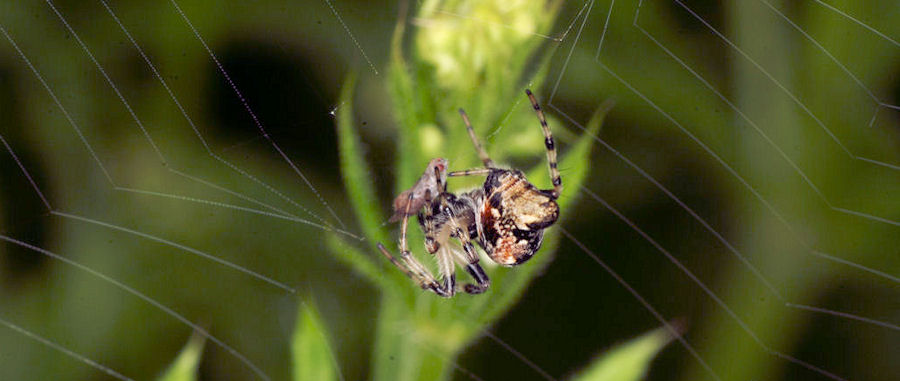
Cyclosa conica with a prey in her wheel web

Cyclosa conica with a prey in her wheel web
The Araneidae is a large family with more than 2500 species worldwide. In Europe 25 genera with 185 species are known.
Almost all these spiders make orb webs that are big in relation to the spider. The webs are denser in the center.
The genera Cyclosa and Argiope construct some sort of stabilizer in the center of the web.
The most famous spider in this family is the Araneus diadematus. Also called cross-spider, kruisspin, Kreuzspinne or Epeire diademe.
Although the name Araneidae is now preferred, in much of the older literature these spiders are called Argiopidae.
The Argiope is the 'Wow' spider in Europe. Argiope bruennichi Is a beautiful black, yellow and white striped spider that makes a zigzag in the center of its web.
A special page about this wasp spider
See here --> Argiope.
More info about web building can be found here --> Web and silk
Genus Araneus
Araneus is probably one of the most spotted spiders because of their size, which varies between 8 and 20 mm, and their large webs. Especially during autumn these spiders become large and you may walk in their webs they construct during the morning. Also in the morning their webs are seen when the sun illuminates them, often full with dewdrops.
Courtship can be hazardous for the small male. The female makes her yellowish
cocoon with 300 - 800 eggs in autumn and she dies. The eggs will hatch in May.
The young spiders are yellow with are dark patch on the abdomen.
If the web is damaged by wind and rain or by the large amount of caught prey, silk of the web is eaten by the spider to conserve protein. Only the foundation lines are
left and new radii and capturing spirals are constructed. Some of the orb weavers
use their web for longer periods and replace only part, usually one half, of
their web at one time.
The Araneus species varies a lot in color and markings.
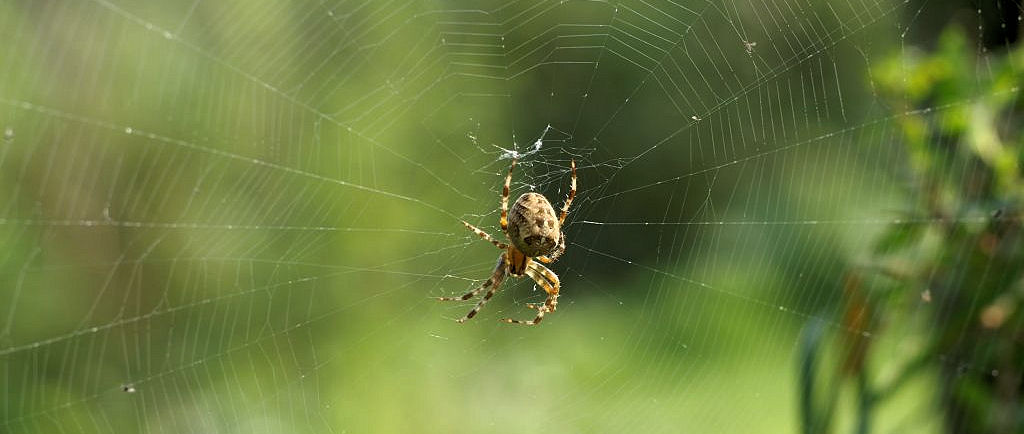 Araneus diadematus |
|
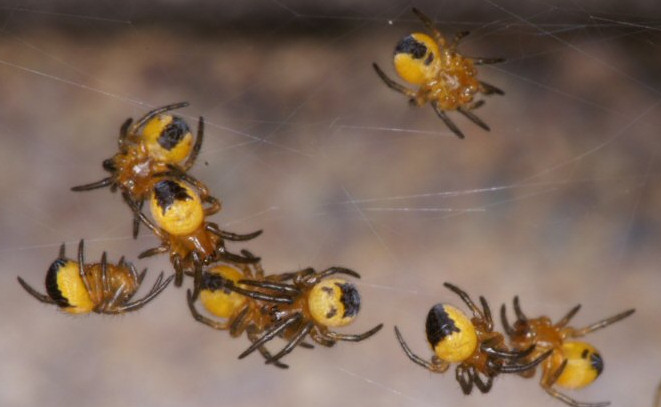 |
Younsters after hatching. |
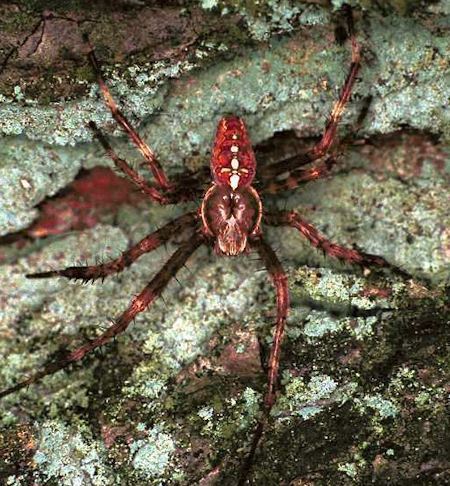 |
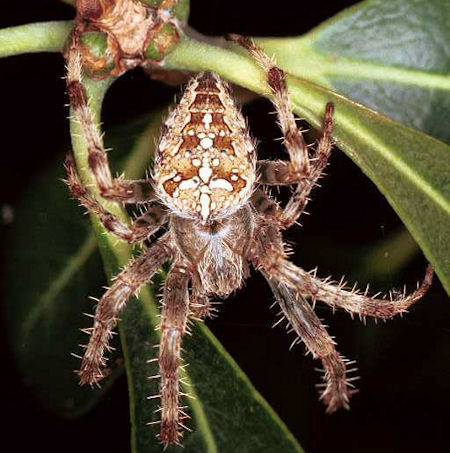 |
| Araneus diadematus male | Araneus diadematus |
| Because the spider is big and vivid, it is one of the most studied spiders. You can find them everywhere, but especially outside your window. (Probably they like TV watching as much as you do.) | |
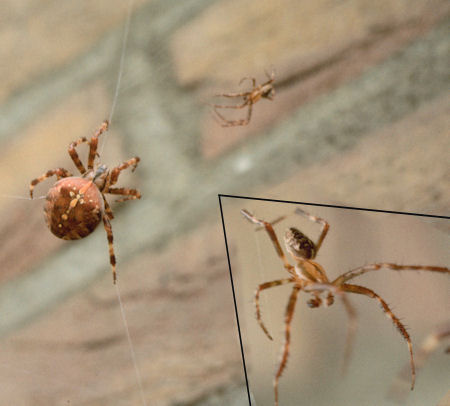 |
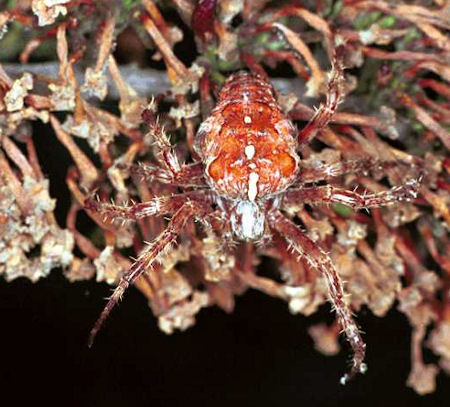 |
| Araneus diadematus female and male | Araneus diadematus can vary a lot in colouring and appearance. |
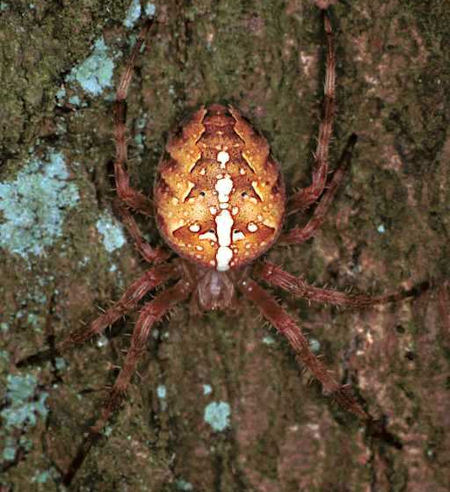 |
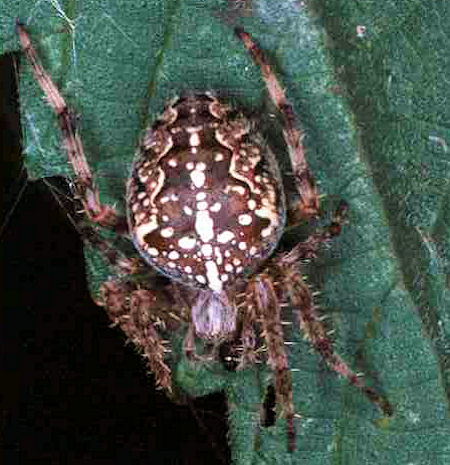 |
| Araneus diadematus | Araneus diadematus |
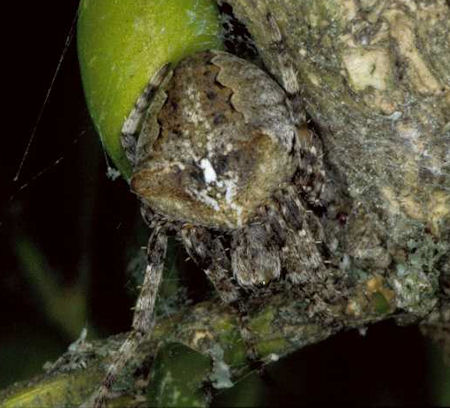 |
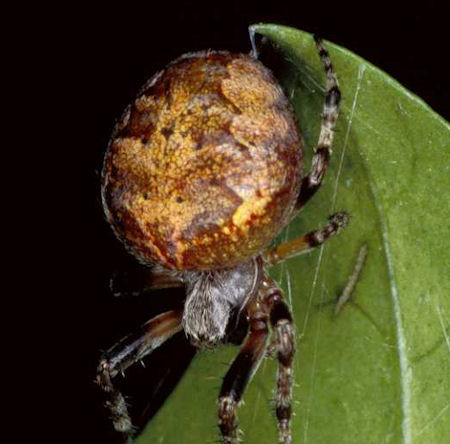 |
| Araneus angulatus | Araneus ZZ081 circe? |
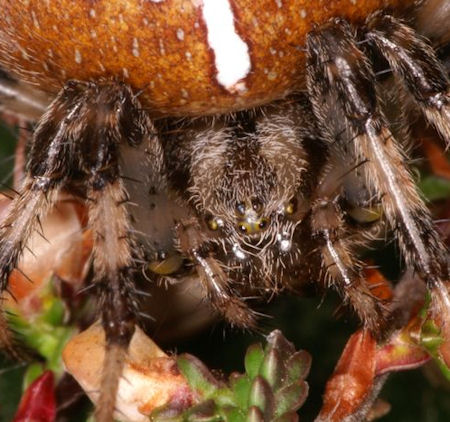 |
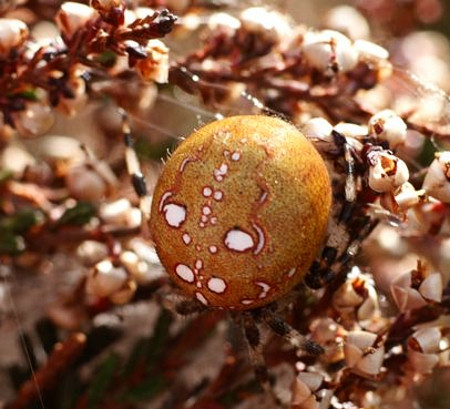 |
| Araneus quadratus | Araneus quadratus |
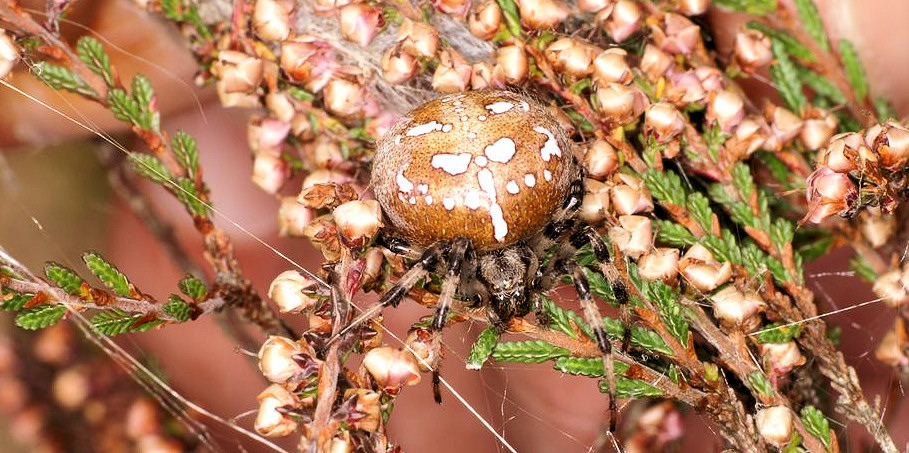 |
|
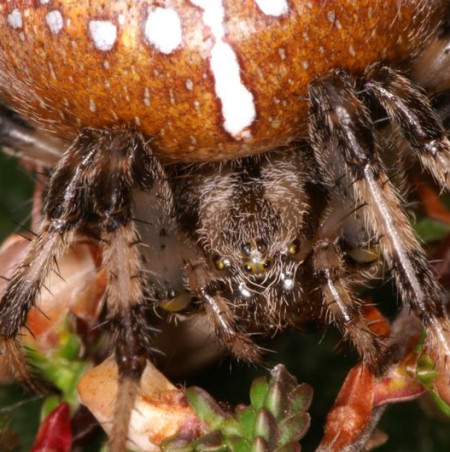 |
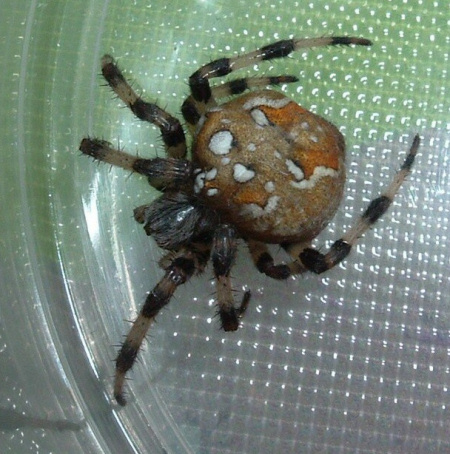 |
| Araneus quadratus female | Araneus quadratus by Paul Beattle |
 |
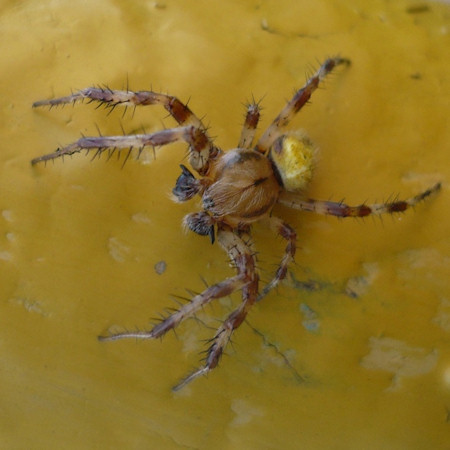 |
| Araneus quadratus male | Araneus quadratus male |
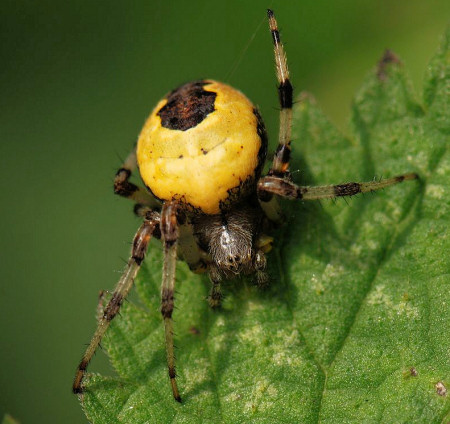 |
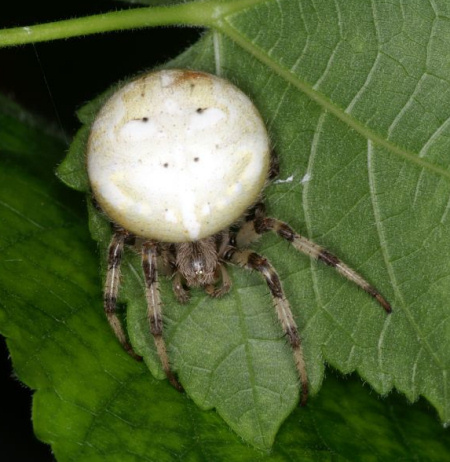 |
| Araneus marmoreus var. pyramidatus photo Eric van Poppel |
Araneus quadratus coloured to white |
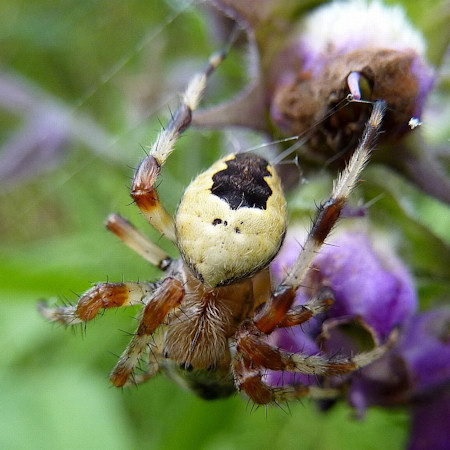 |
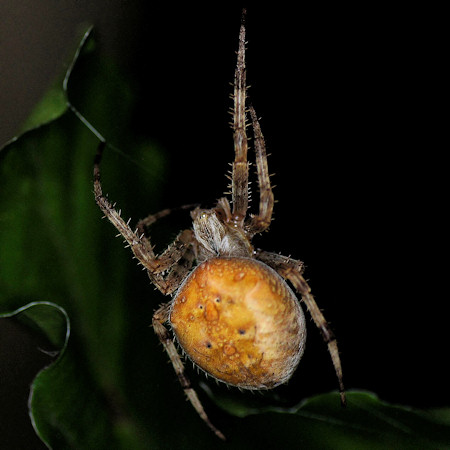 |
| Araneus marmoreus var. pyramidatus photo by Hans Jonkman |
Araneus marmoreus photo by Hans Jonkman |
Genus Araneus was Atea
| Araneus sturmi | Araneus sturmi |
| This spider lives on conifers and bushes and has a size of 3 -5 mm. She resembles Araneus triguttata and can only be distinguished by microscope. | |
Genus Aculepeira
Of the two European species, only Aculepeira ceropegia occurs in the north. Their size varies between 12 and 15 mm.
The spider lives in bushes and low vegetation. They have a catching orb web and a hiding web.
Aculepeira ceropegia´s common name is "oak leaf" spiders. The pattern on their back resembles an oak leaf.
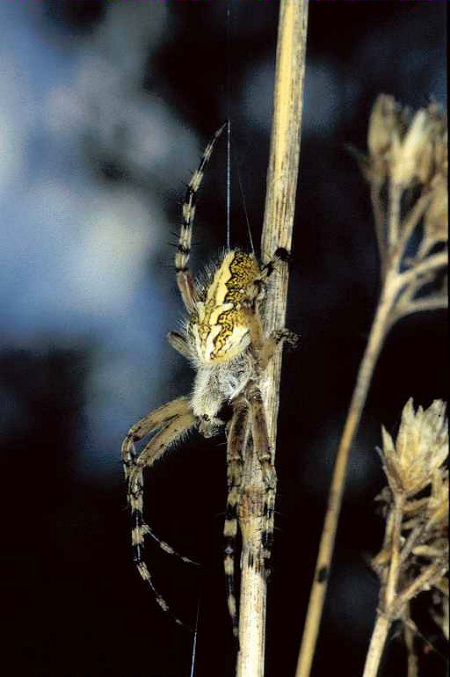 |
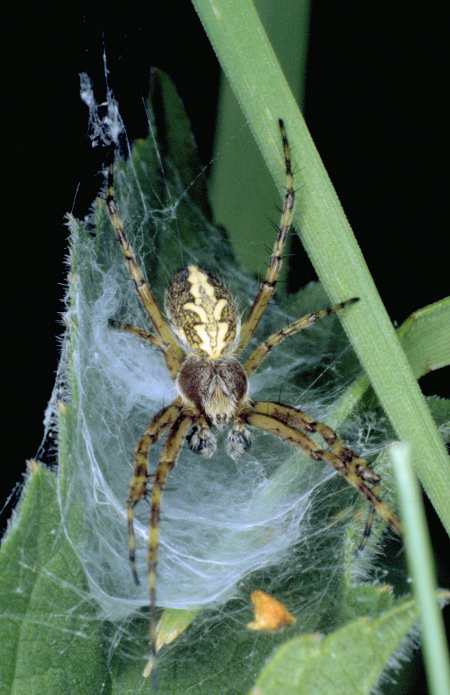 |
| Aculepeira ceropegia | Aculepeira ceropegia |
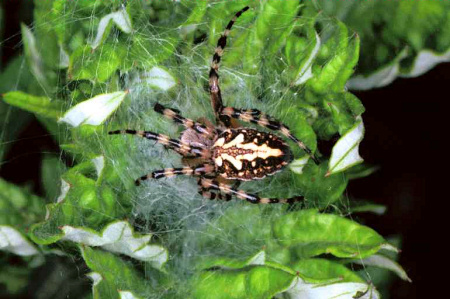 |
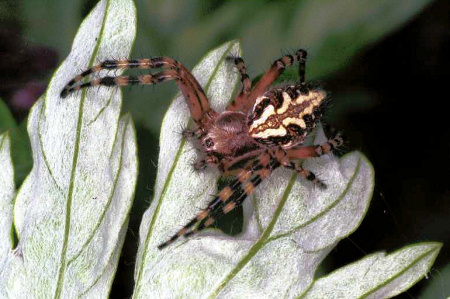 |
| Aculepeira armida | Aculepeira armida |
Genus Agalenatea
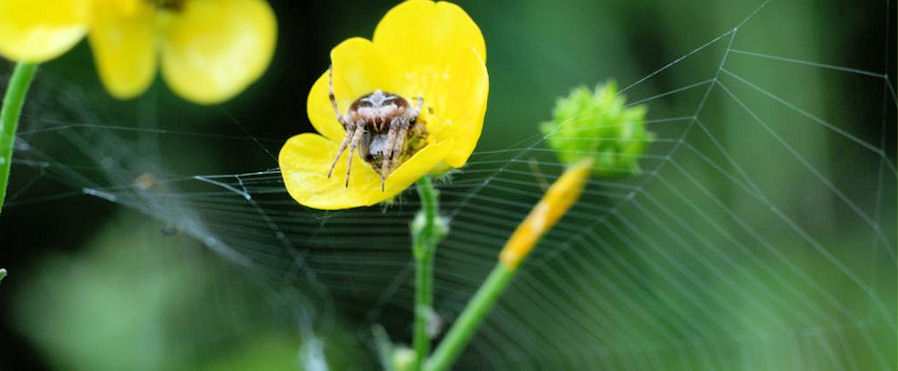
Agalenatea redii is the single European member of this genus.
The male spider is between 3.5 and 4.5 mm, the female 5.5 - 7 mm.
It has an almost circular body and can be identified by the v-sign at the front end of the abdomen.
This spider is very variable in colour.
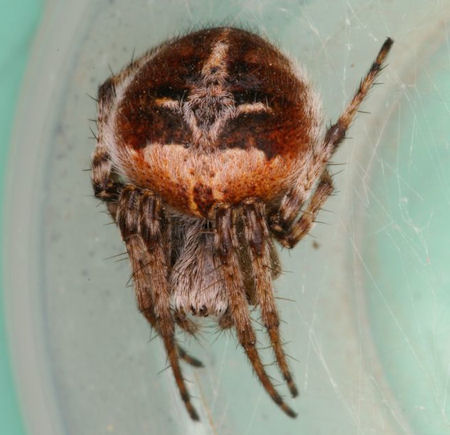 |
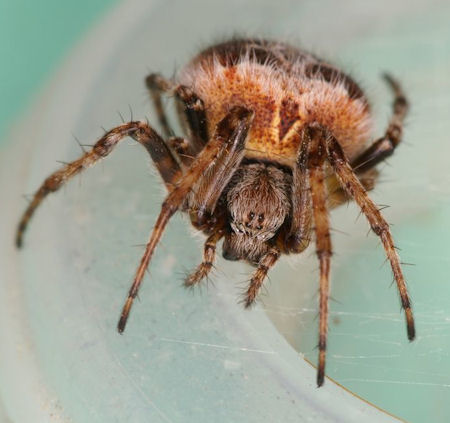 |
| Agalenatea redii | Agalenatea redii |
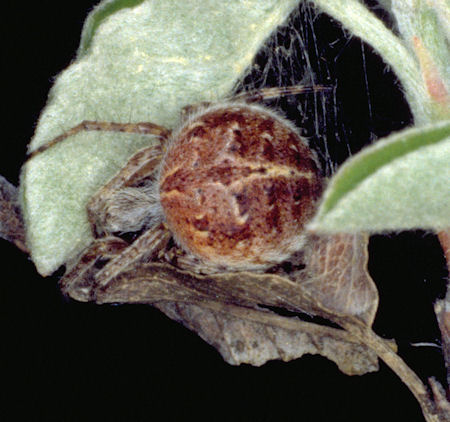 |
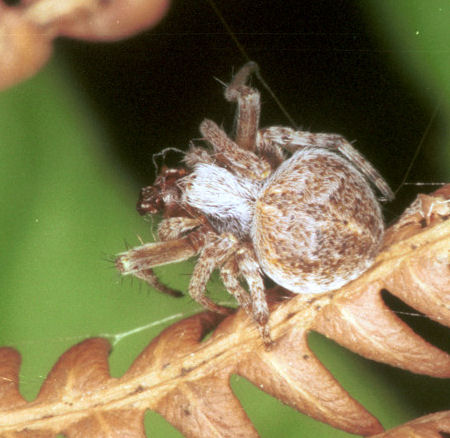 |
| Agalenatea redii | Agalenatea redii |
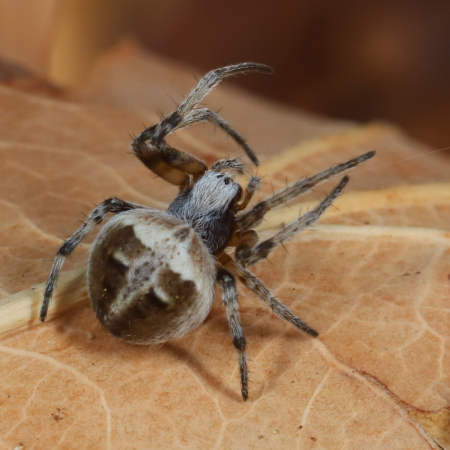 |
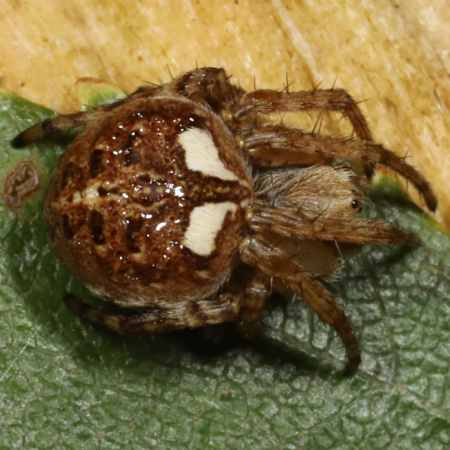 |
| Agalenatea redii | Agalenatea redii |
Genus Araniella
 |
|
| Araniella cucurbitina female in web Araniella cucurbitina is similar to A. alpica (below) The red dot on the spinnerets is characteristic for this spider. Their size varies between 4 - 11 mm. |
|
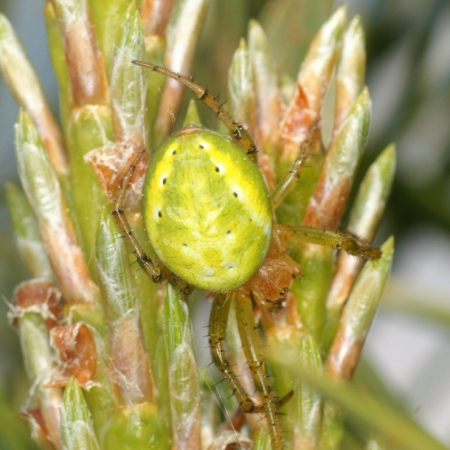 |
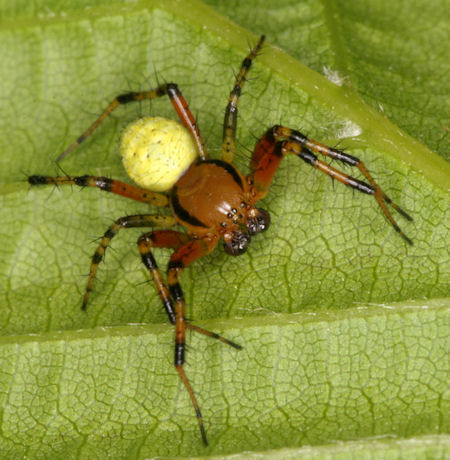 |
| Araniella cucurbitina female | Araniella cucurbitina male |
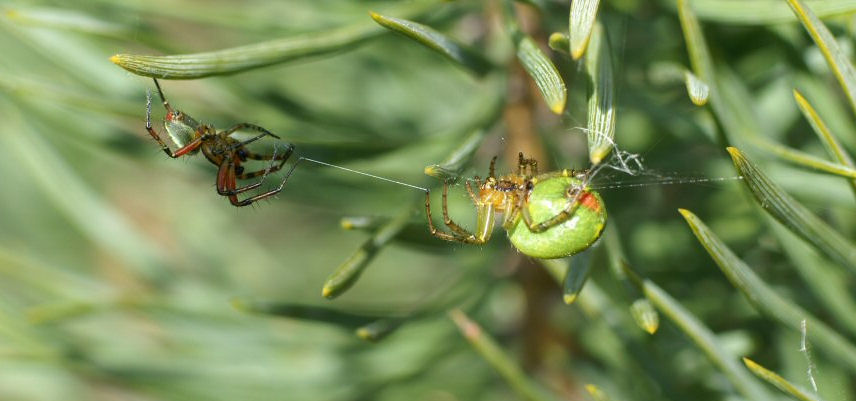 |
|
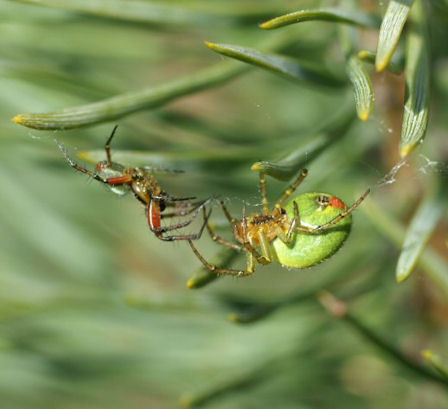 |
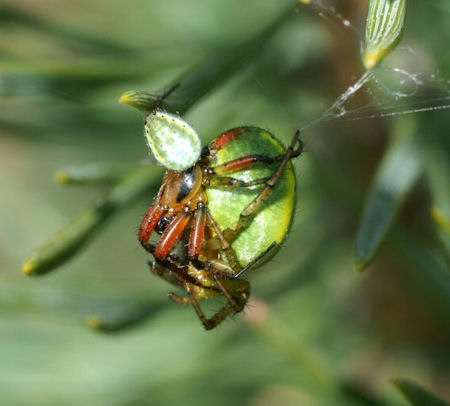 |
| Araniella cucurbitina female and male. The man advances cautiously | |
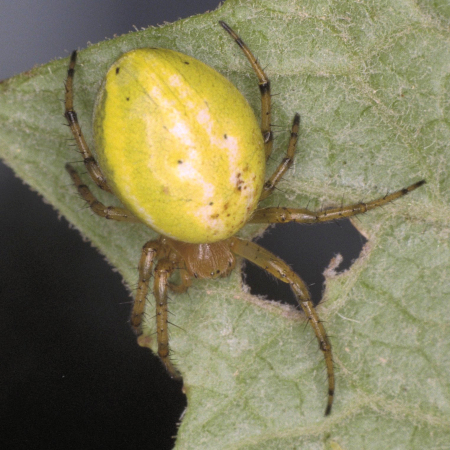 |
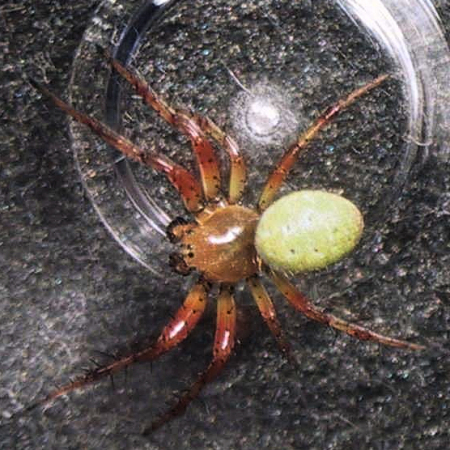 |
| Araniella alpica | Araniella inconspicua (by Lionel Dabat) |
| Araniella alpica lives in the Alps, as you would have guessed. The spider is very similar to Araniella inconspicua and Araniella opisthographa. | |
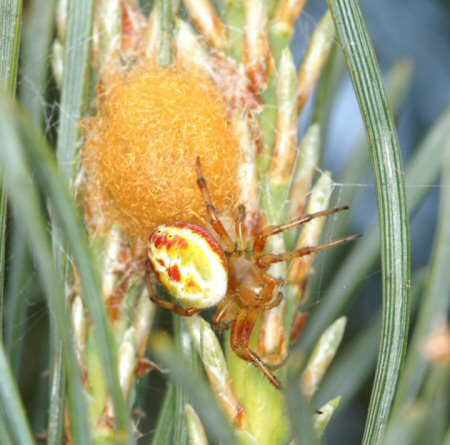 |
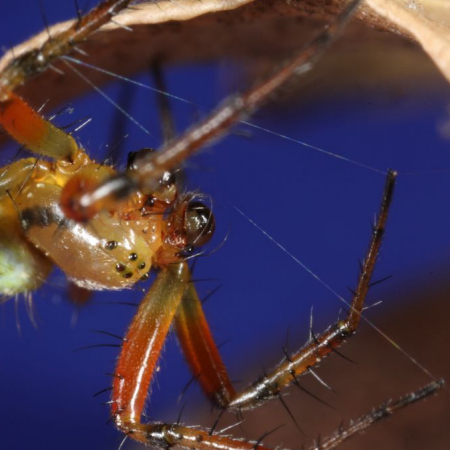 |
| Araniella displicata guarding her eggs. | Araniella displicata male |
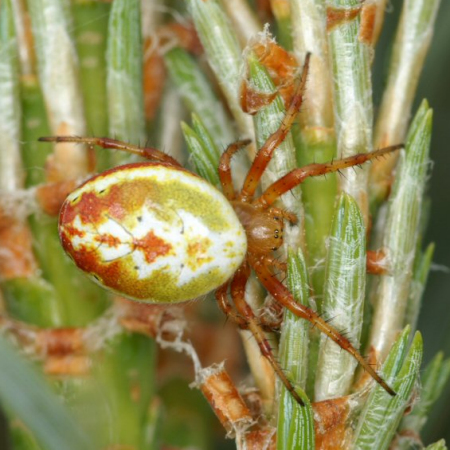 |
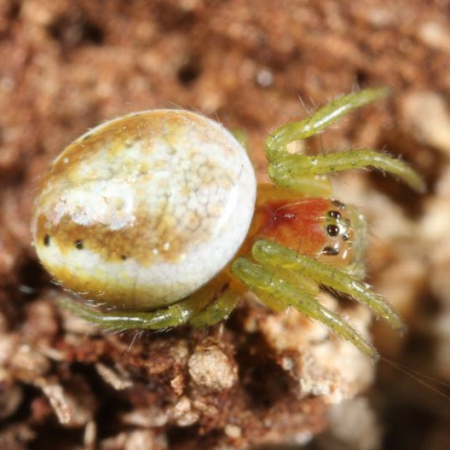 |
| Araniella displicata female | Araniella displicata juvenile |
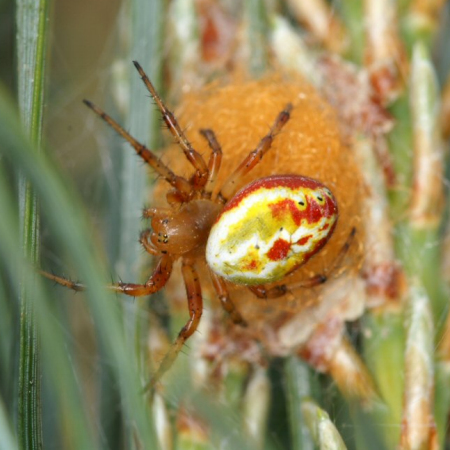 |
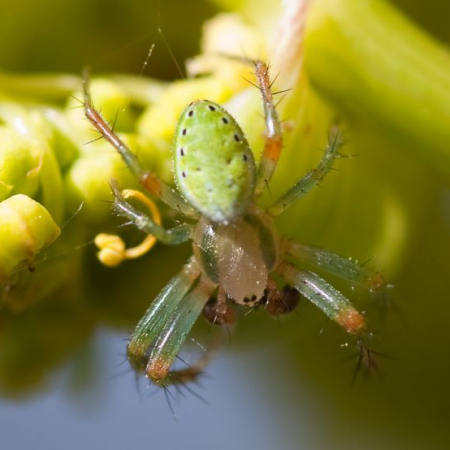 |
| Araniella displicata guarding her eggs | Araniella maderiana (by Gustavo Peña Tejera) |
More on this page
This is very beautiful spider a lot of people spot in their garden. As noted before the spider is not dangerous. The spider is easily recognized by the zigzag formation of white silk, which they weave in their web. Often it is a zigzag line through the center of the web or even a white cross of web material in which the spider is hanging.
It was thought that the zigzag of silk was made to strengthen the web but some neat experiments have shown that its function is to advertise the presence of their web to birds allowing them to avoid the web. Because the spider eats its old web before constructing a new one, destruction of the web by birds will lead to substantial protein loss. There is also a theory that suggests that the zigzag of silk attract insects because it reflects the ultra-violet radiation like flowers do.
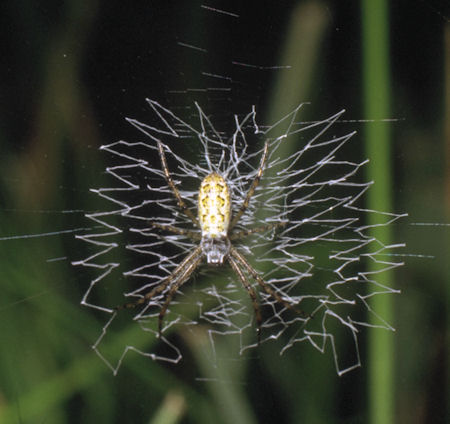
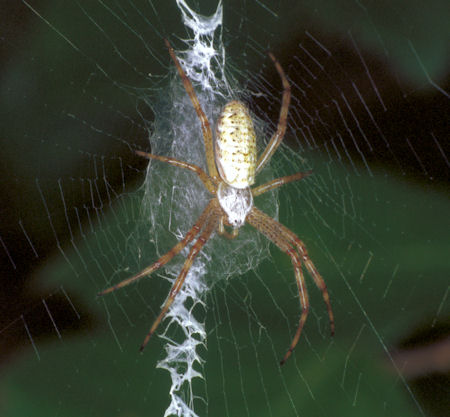
Argiope bruennichi (youngster) or wasp spider.
This spider is about 20 mm in length. She makes her orb-web in long grass near the ground. The adult females have beautiful black, white and yellow markings.
The egg-sacs are large brown flask shaped and she hangs them in the web and guards until they hatch. She dies after the hatching of her eggs. The female often consumes the much smaller male after mating.
See also the Argiopes from the USA and on the Australian spider site.
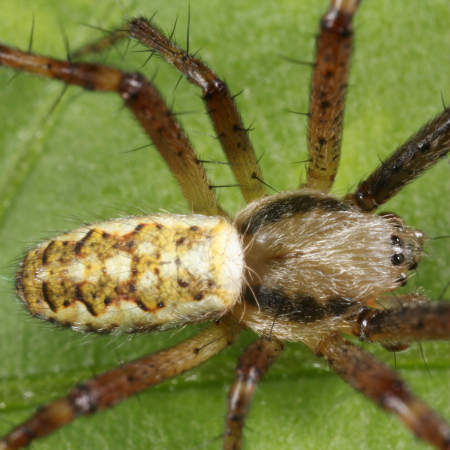 |
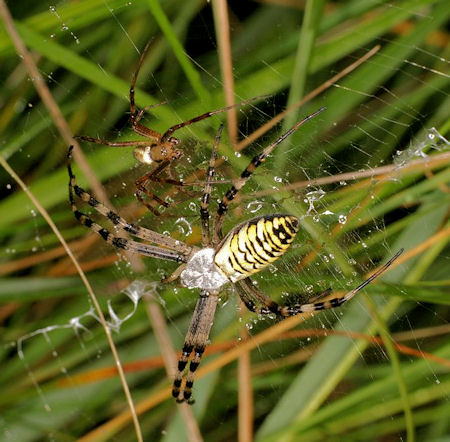 |
| Argiope bruennichi male | Argiope bruennichi male and female |
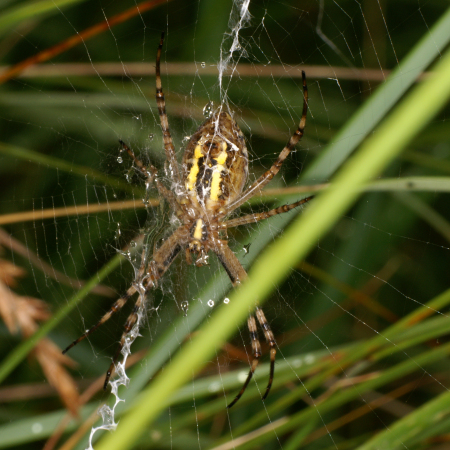 |
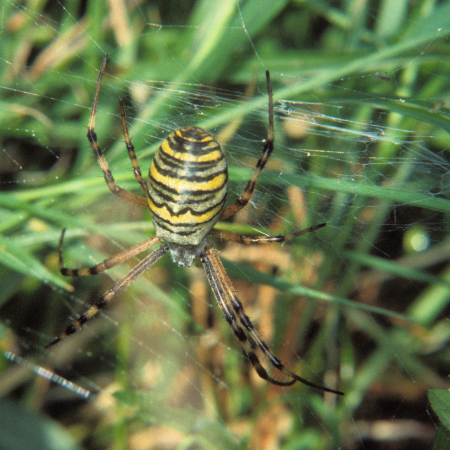 |
| Argiope bruennichi female. | Argiope bruennichi female. |
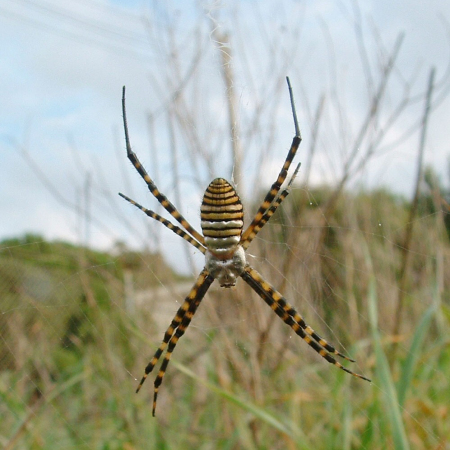 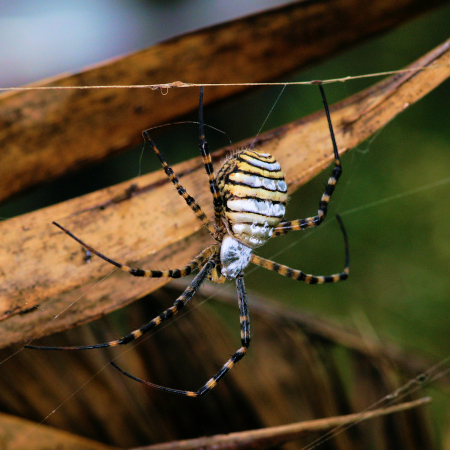 |
|
| Argiope trifasciata by Victor Falzon, Malta | Argiope trifasciata |
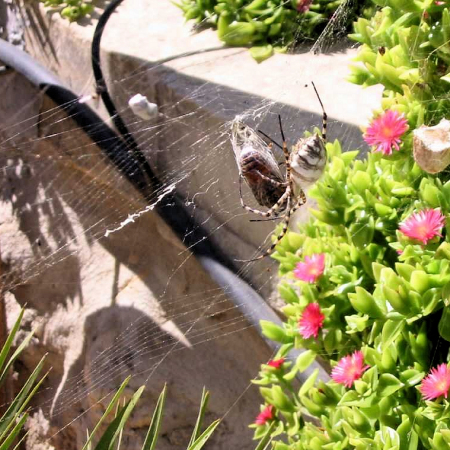 |
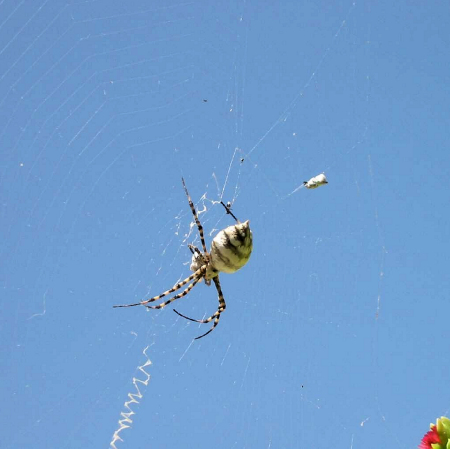 |
| Argiope lobata (H C Torreggiani, Malta) | Argiope lobata (H C Torreggiani, Malta) |
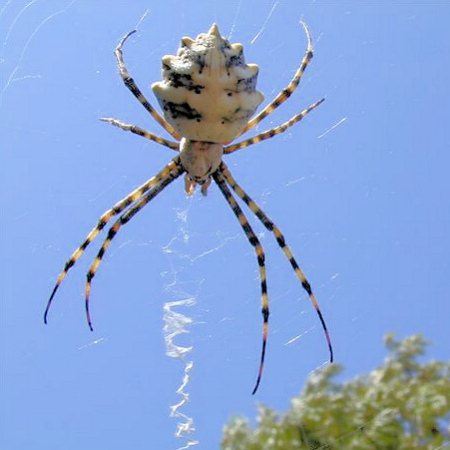 |
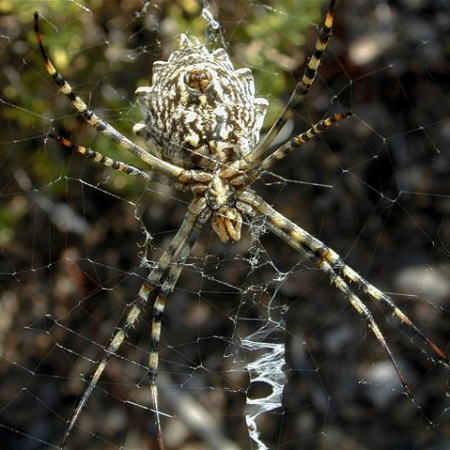 |
| Argiope lobata (Bill Sawyer) | Argiope lobata (Bill Sawyer) |
|
Genus Cyclosa
Two strange looking spider can be found in this genus, Cyclosa conica and Cyclosa oculata. The size of these spiders varies between 3 - 6 mm. Marking and colour varies widely of the common occuring Cyclosa conica. The abdomen of the female has a tubercle that is rudimetary with the males. |
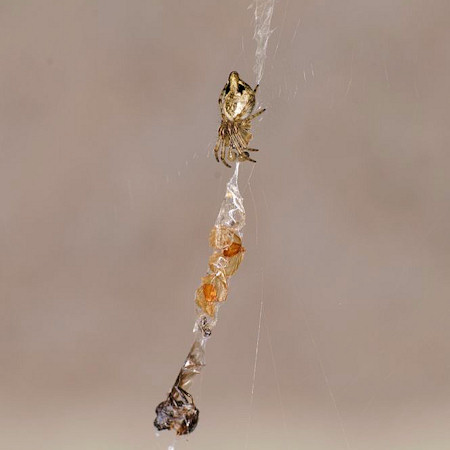 |
| Cyclosa conica | |
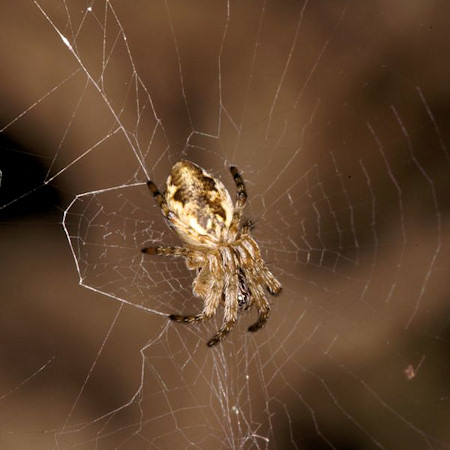 |
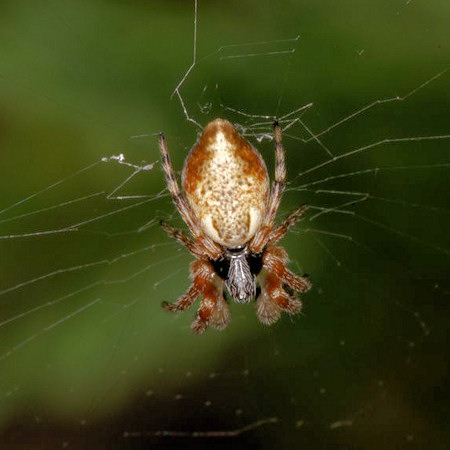 |
| Cyclosa conica | Cyclosa conica |
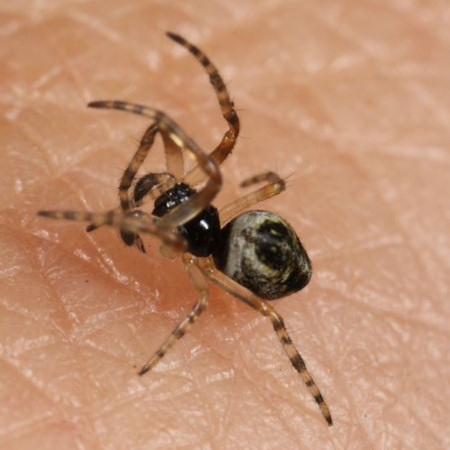 |
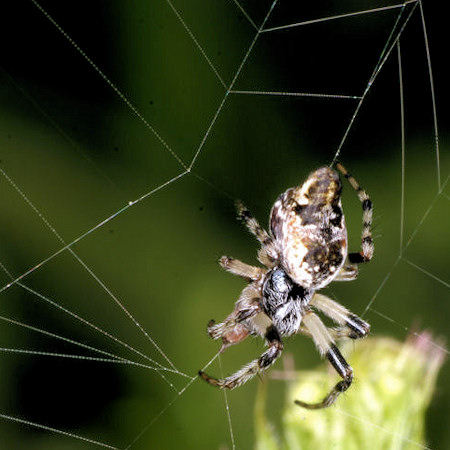 |
| Cyclosa conica male | Cyclosa conica |
Genus Cercidia
The only species in this genus and characterised by its oval, in front pointed, abdomen. The spider makes it web without a centre just above the ground in which its waits for prey. When disturbed she rapidly falls to the ground. Its size varies between 3 and 4 mm. |
|
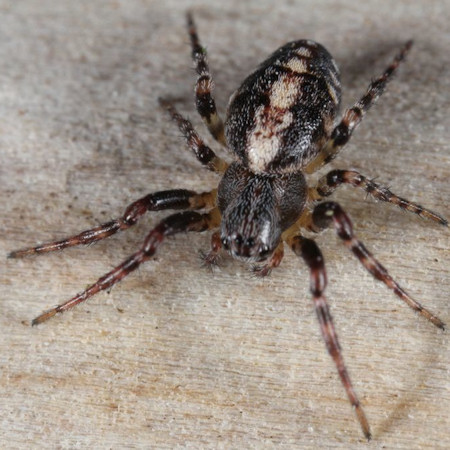 |
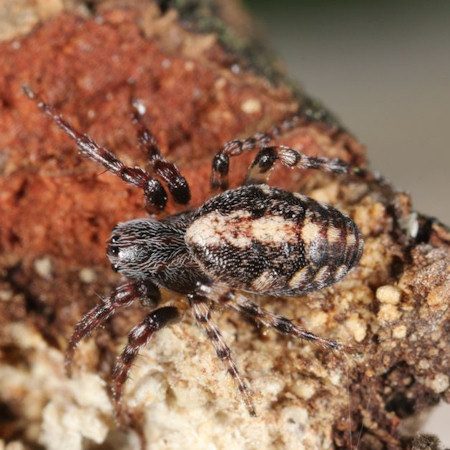 |
| Cercidia prominens | Cercidia prominens |
Genus Gibbaranea
Four species occur in NW-Europe and their size varies between 4 and 7 mm. In both sexes the abdomen has a pair of extremeties on the front half of the abdomen.
They can be found on trees and bushes. Male and female are similar in apprearance.
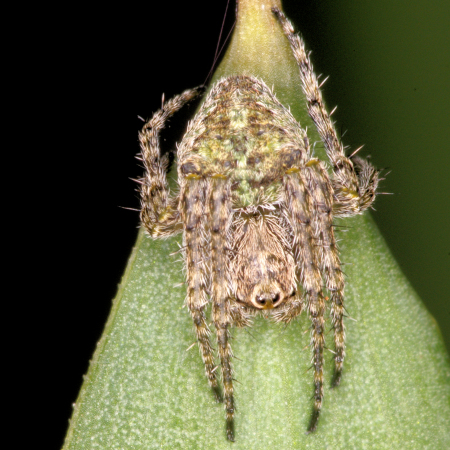 |
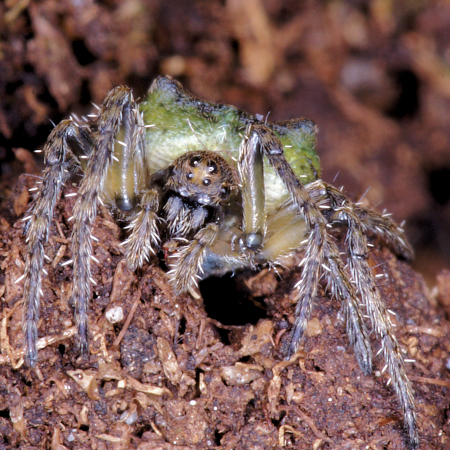 |
| Gibbaranea gibbosa | Gibbaranea gibbosa |
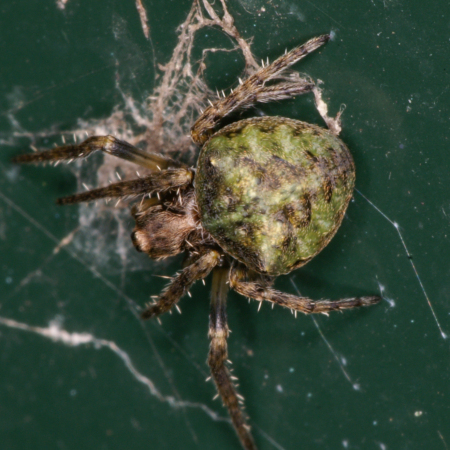 |
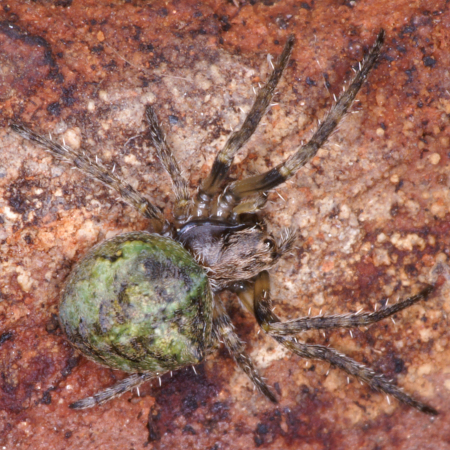 |
| Gibbaranea gibbosa | Gibbaranea gibbosa |
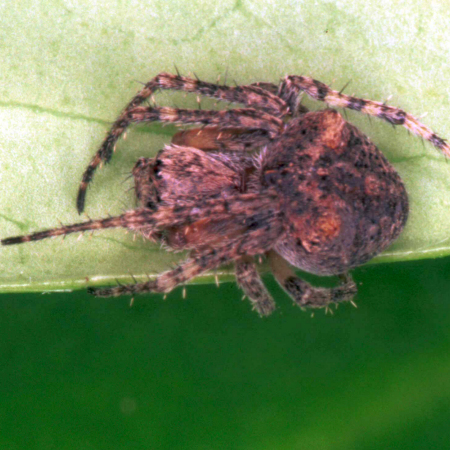 |
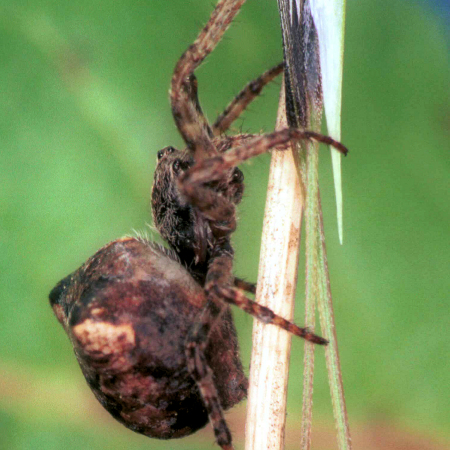 |
| Gibbaranea gibbosa | Gibbaranea gibbosa |
|
|
|
|
Gibbaranea bituberculata |
Gibbaranea bituberculata |
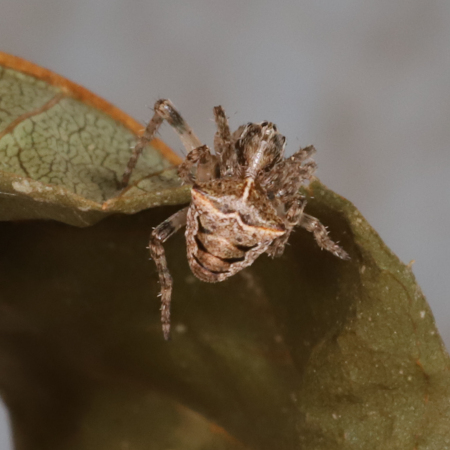 |
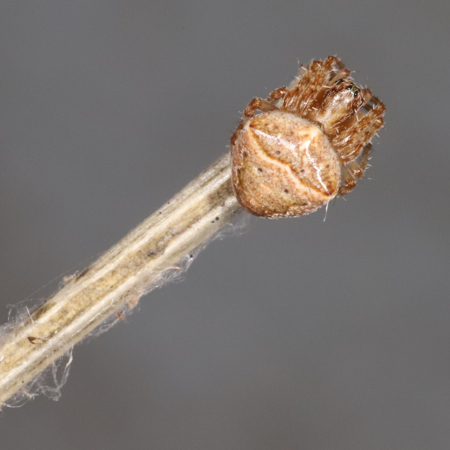 |
| Gibbaranea omoeda has two distinct pointed bumps | Gibbaranea bituberculata |
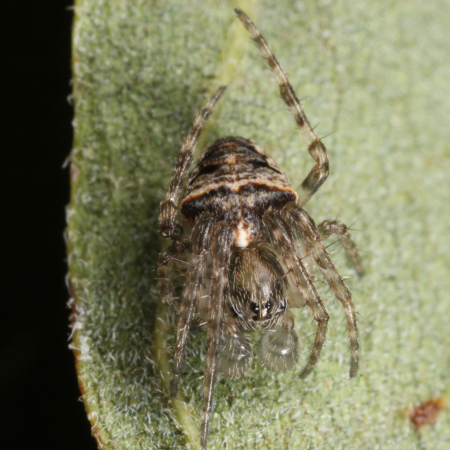 |
|
| Gibbaranea omoeda | Gibbaranea omoeda male |
Genus Larinioides
All these spiders spin orb webs close to water.
The Larinioides sclopetarius tends to live on man-made steel objects and is seldom found on vegetation.
I found this spider in the dunes on a steel lock. The spider can be black and white but there are also brown variants.
|
|
|
|
.Larinioides sclopetarius |
.Larinioides sclopetarius |
|
|
|
|
Larinioides sclopetarius male |
Larinioides sclopetarius |
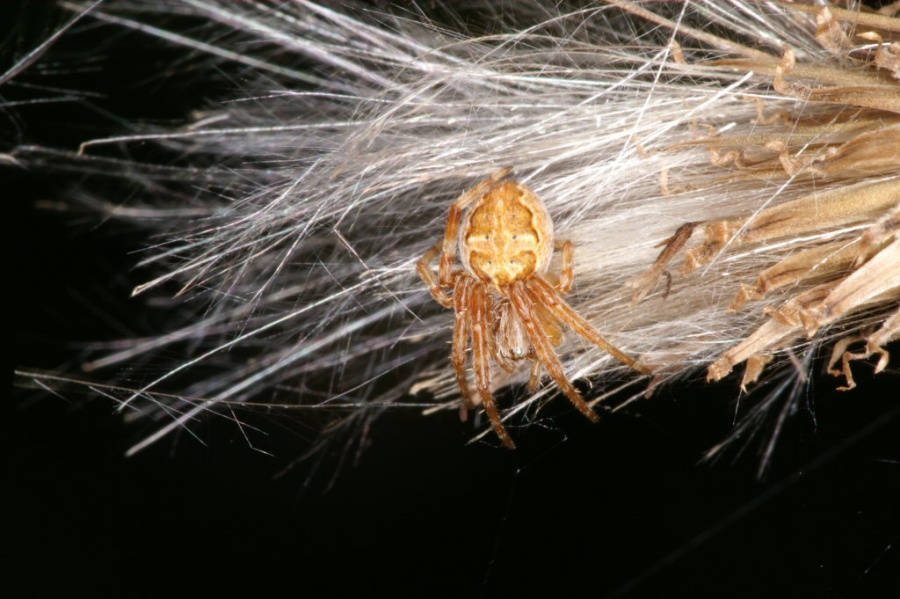 |
|
| Larinioides cornutus | |
|
|
|
|
Larinioides cornutus female |
Larinioides cornutus male |
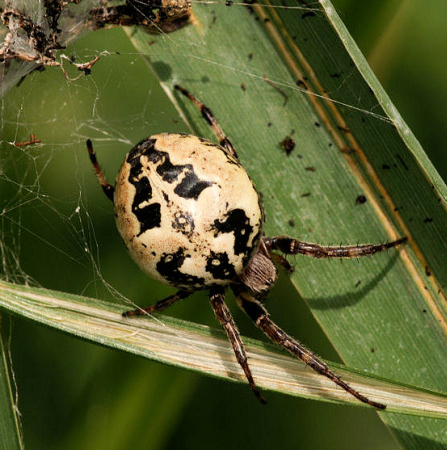 |
|
| Larinioides cornutus female |
Larinioides cornutus spinning her web |
 |
|
| Larinioides cornutus female and male | |
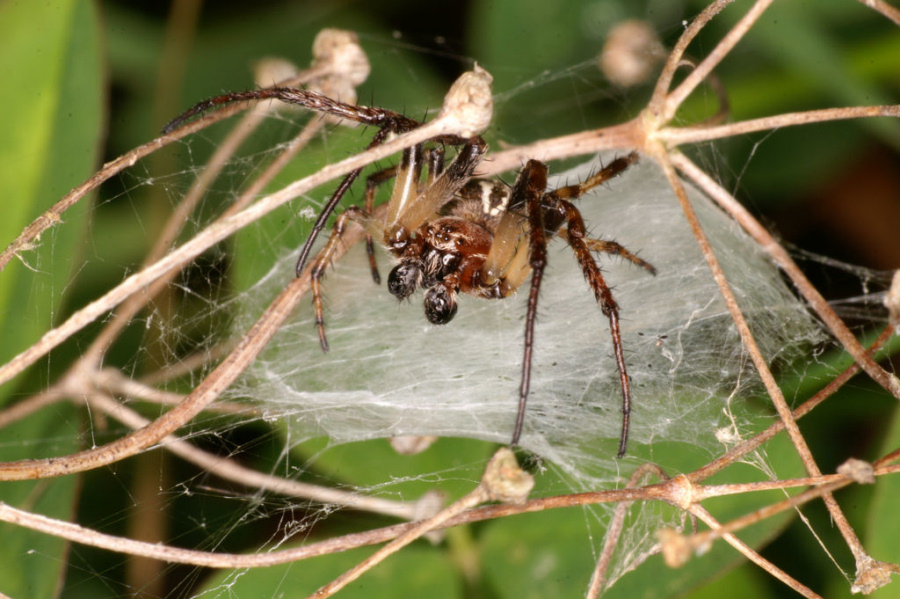 |
|
| Larinioides cornutus male | |
Genus Mangora
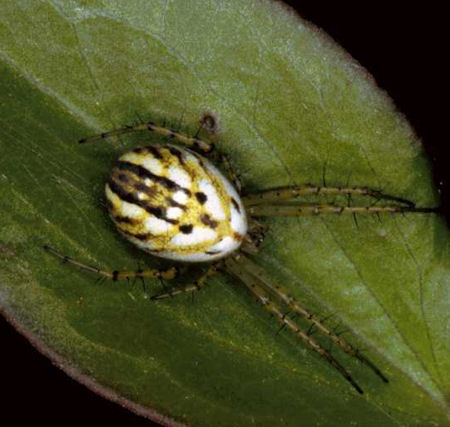 |
Only one species, Mangora acalypha, can be found in our regions. The size of the spider is between 2.5 and 4 mm. The spider spins it web almost horizontal on bushes and low vegetation. The web is not very large but contains up to 60 radii. |
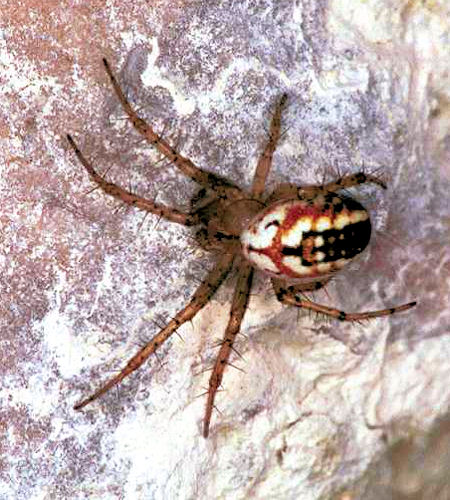 |
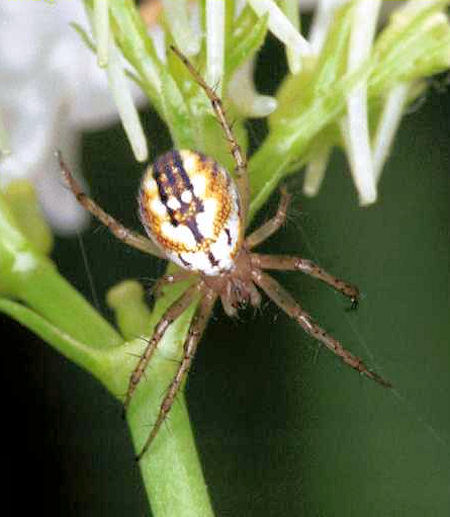 |
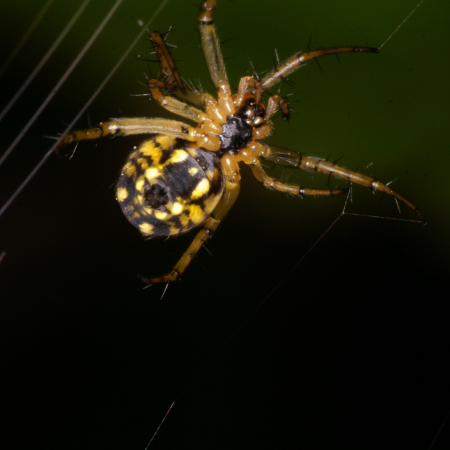 |
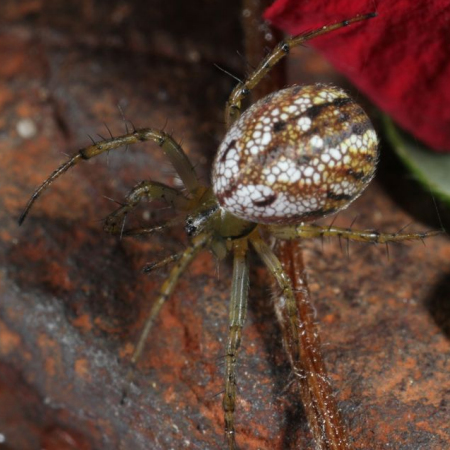 |
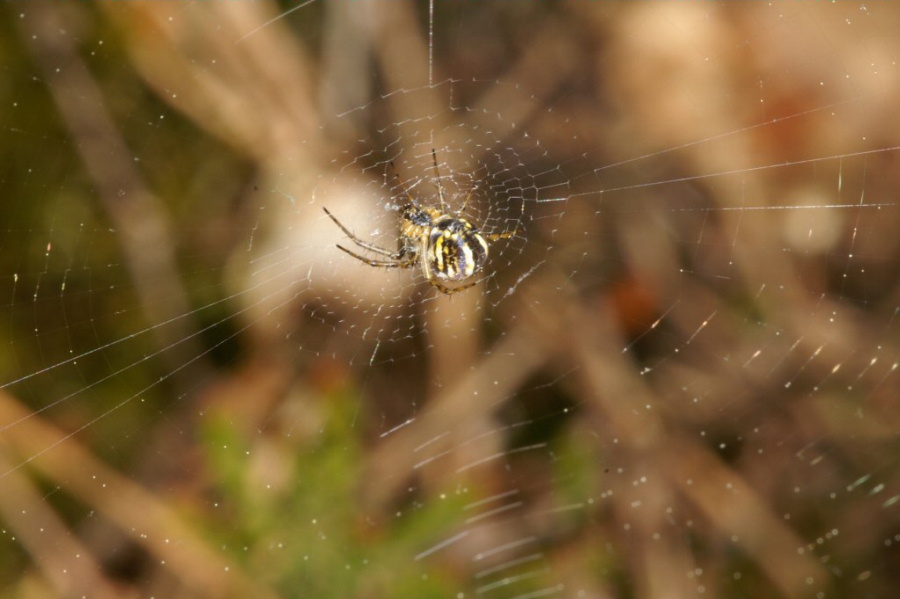 |
|
Genus Neoscona
Neoscona adianta is very similar with Aculepeira ceropegia but is smaller with 4-5 mm for the male and 5-7 mm for the female. It prefers heather to live on.
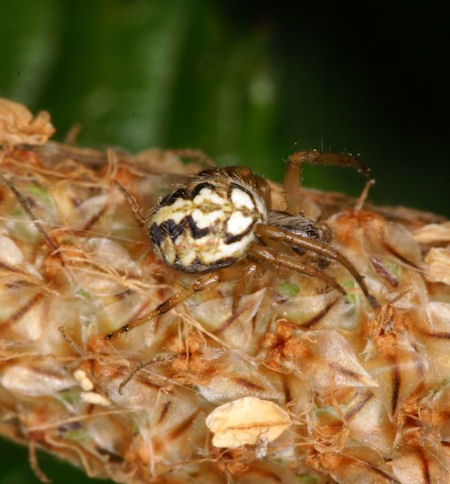 |
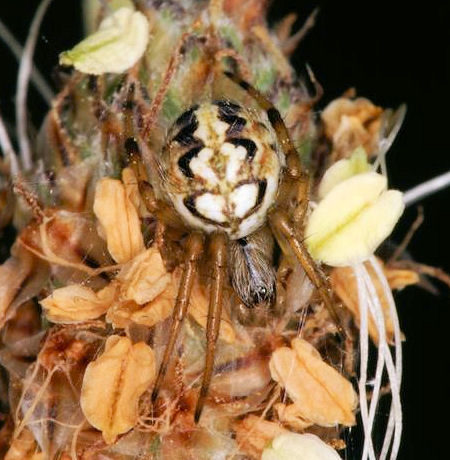 |
| Neoscona adianta | Neoscona adianta |
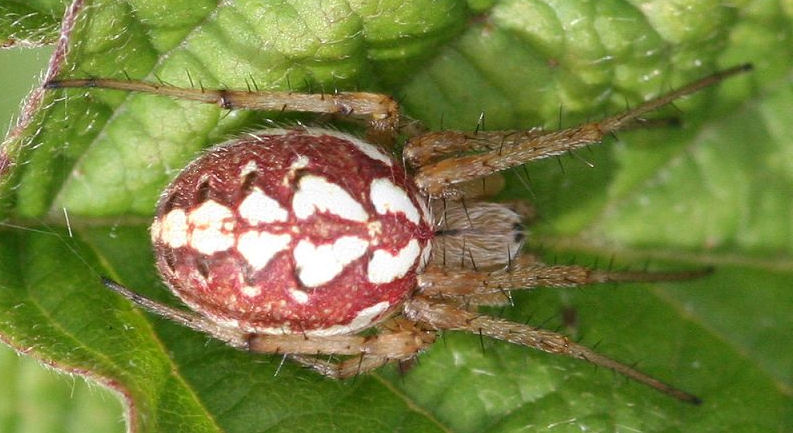 |
|
| Neoscona adianta by Floris Grotenhuis | |
Genus Nuctenea
This spider can be found particularly under bark of dead trees where it hides during daytime. It has a flat abdomen.
The male is about 9 mm, the female 14 mm in length.
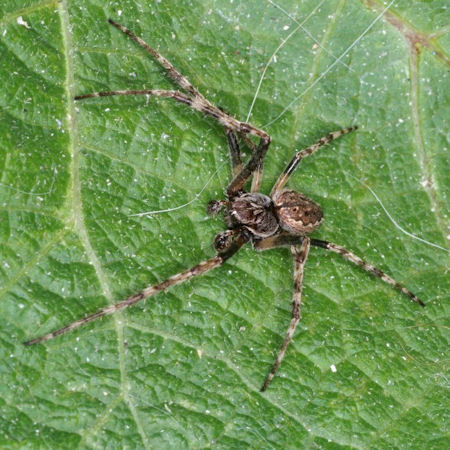 |
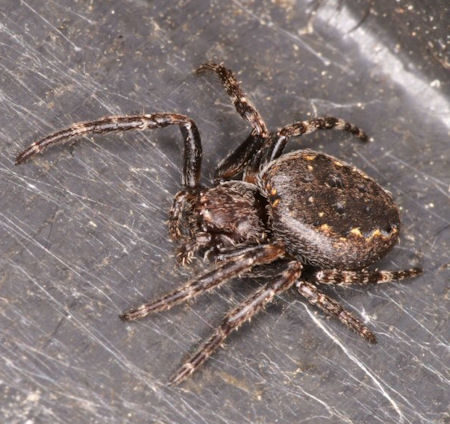 |
| Nuctenea umbratica male | Nuctenea umbratica male |
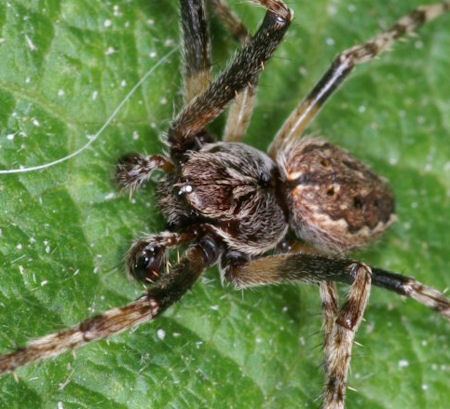 |
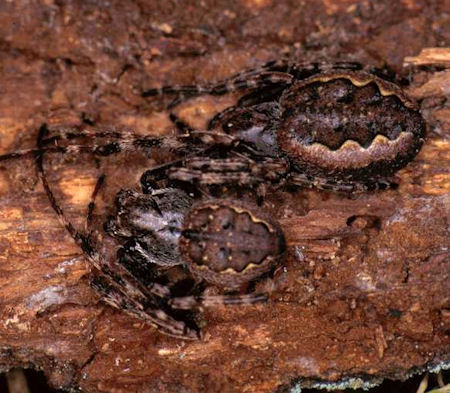 |
| Nuctenea umbratica male | Nuctenea umbratica male and female |
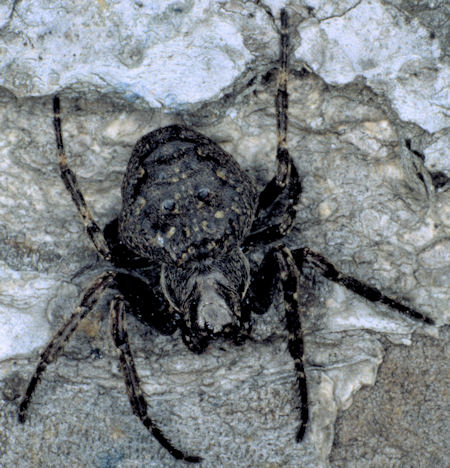 |
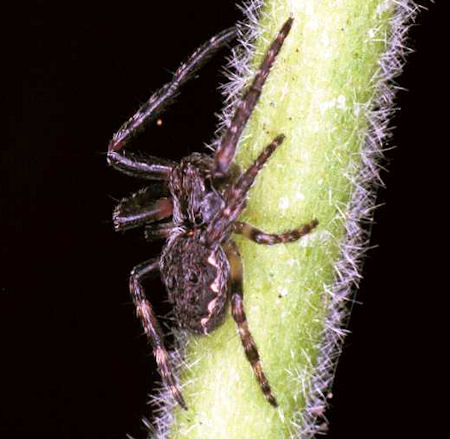 |
| Nuctenea umbratica female | Nuctenea umbratica female |
Genus Singa and Hypsosinga
Four species occur in NW-Europe. Their size varies between 2 and 5 mm. They have an oval abdomen with a fatty shine.
Males can be entirely black. They spin their orb webs in low vegetation, often near water.
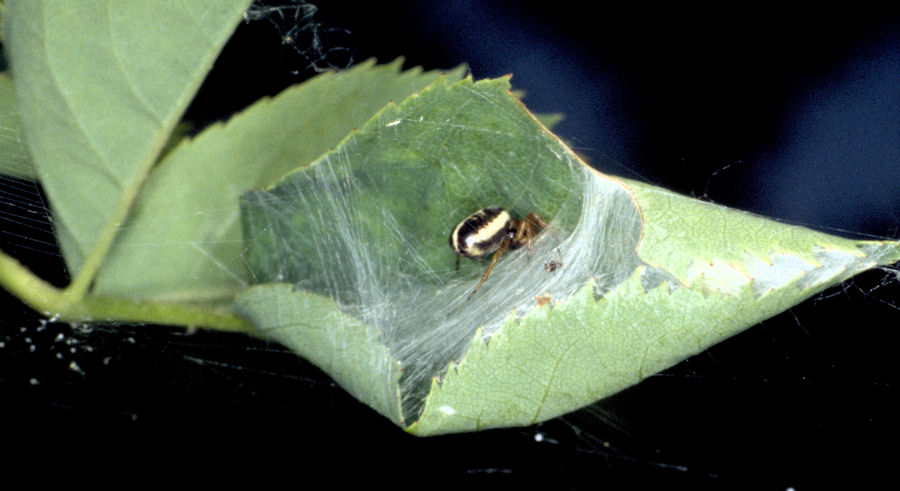 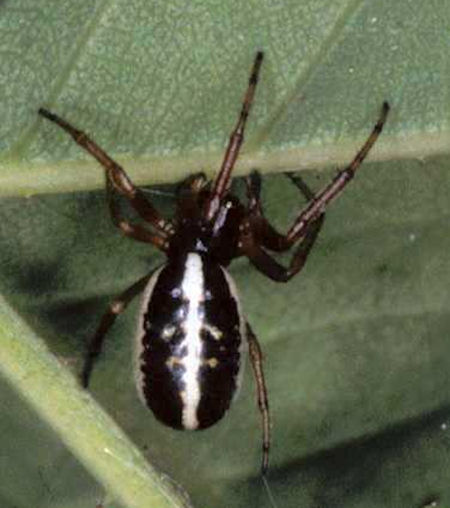 |
|
| Singa nitidula | Singa nitidula |
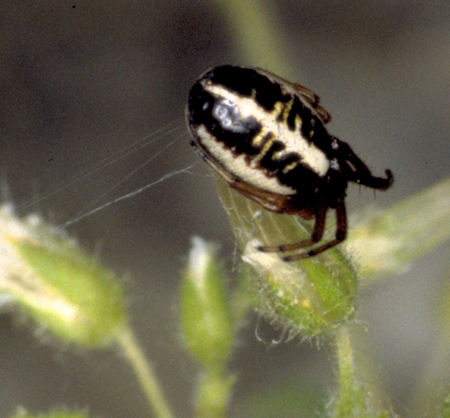 |
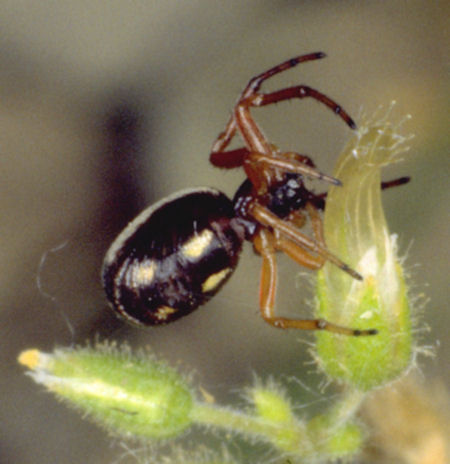 |
| Singa hamata | Singa hamataSinga hamata |
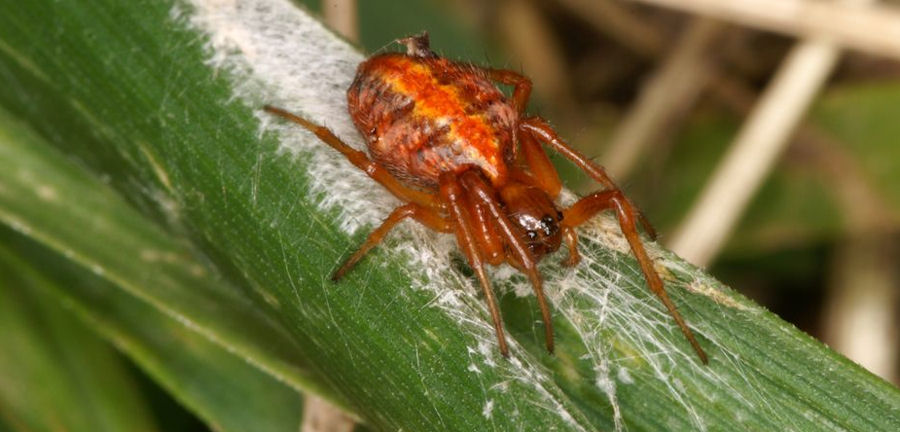 |
|
| Hypsosinga heri | |
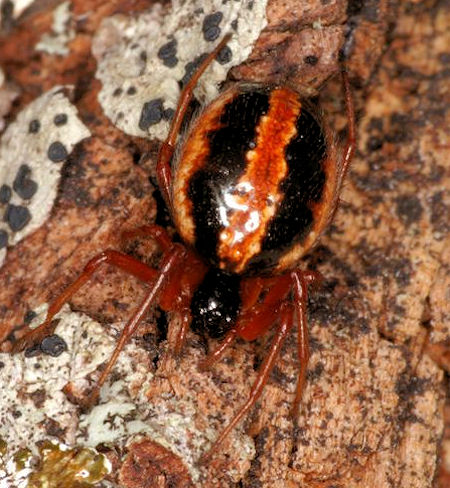 |
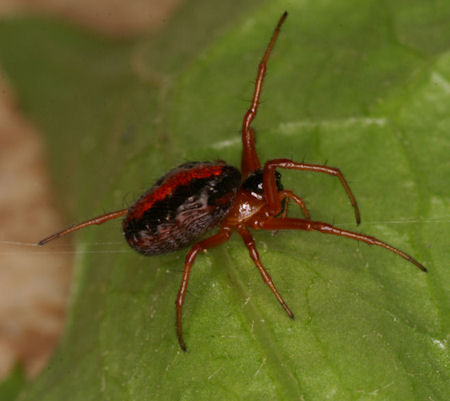 Hypsosinga heri |
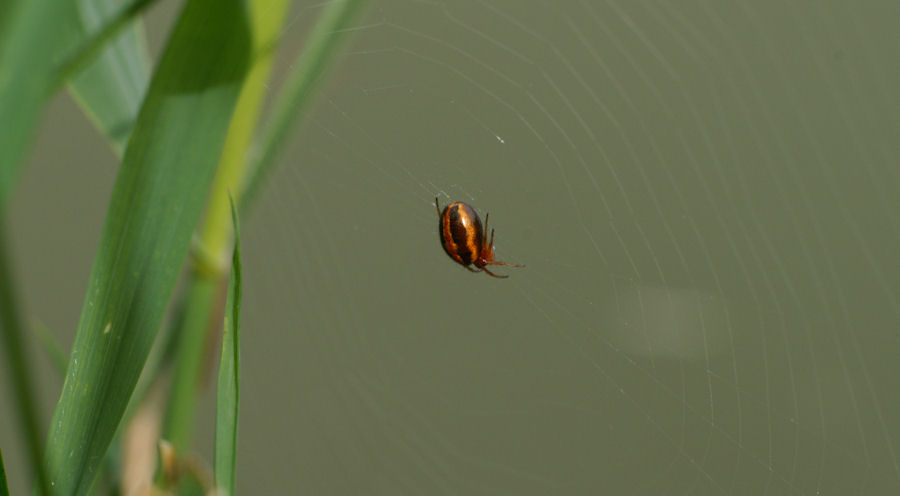 Hypsosinga heri |
|
Genus Zilla Zilla diodia is only European member with a size of 2 - 5 mm. She prefer to make her web in the shade on bushes and heather. The spiders does not has a retreat but stays in the center of her web waiting for prey. |
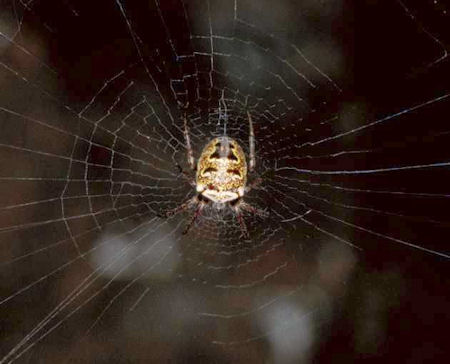 |
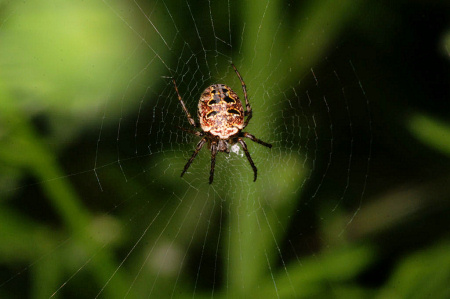 |
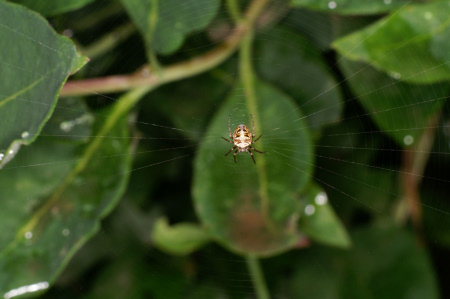 |
Genus Zygiella
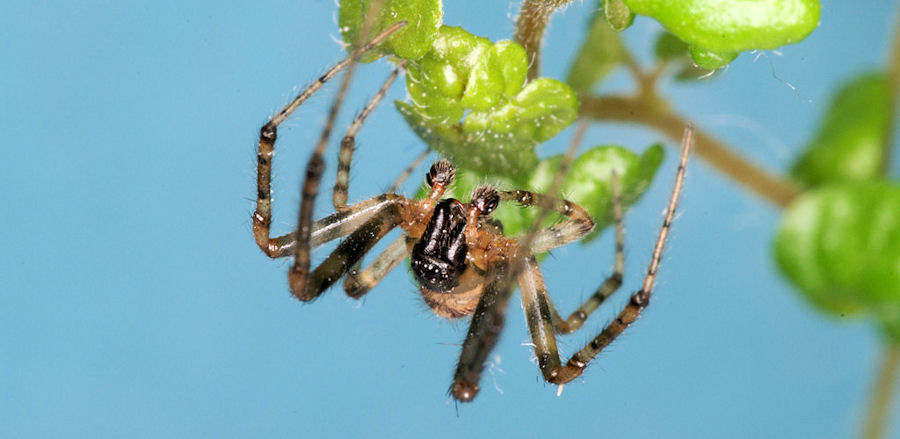
Zygiella x-notata can be found in the neighbourhood of houses. In winter,
it is the only orb web spider that continues to make webs.
Zygiella atrica is browner and is found away from houses on bushes or rocky sites.
This genus makes a orb web that misses two sectors. Through the middle of these two missing sectors a signal thread runs to the spiders hiding place.
Males can reach a length of 5 mm and the females 7 mm.
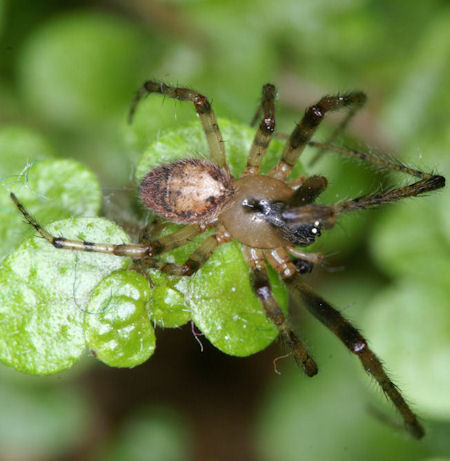 |
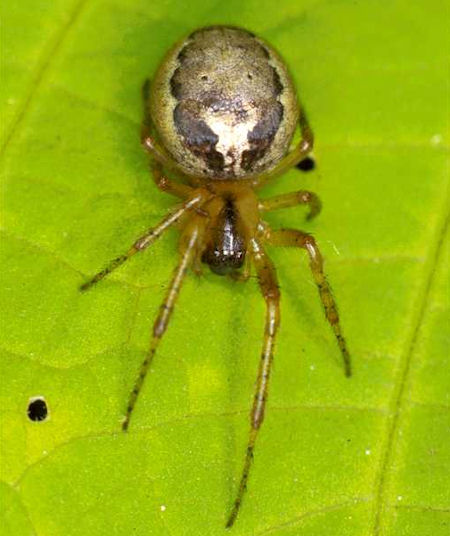 |
| Zygiella x-notata male | Zygiella x-notata female |
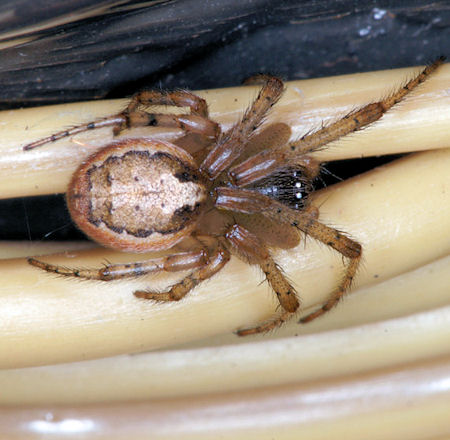 |
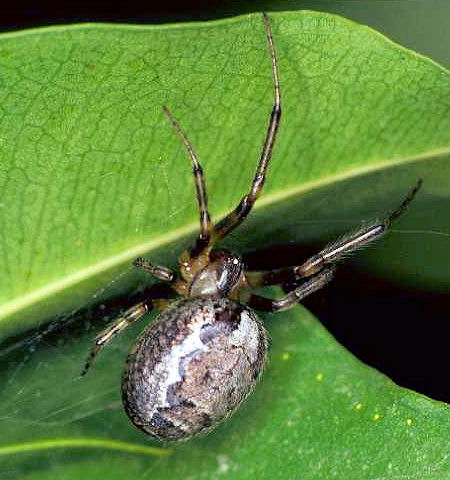 |
| Zygiella atrica female | Zygiella x-notata female |
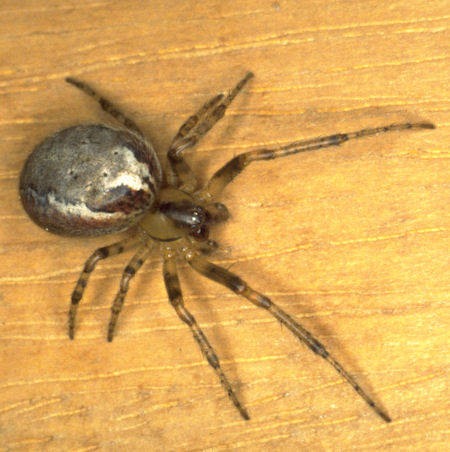 |
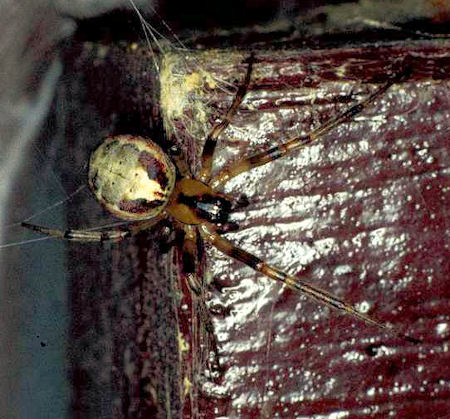 |
| Zygiella atrica female | Zygiella atrica male |
Ed Nieuwenhuys, 22 maarch 2023
29 december 2019 ,17 November 2013, 14 Augustus 2011, 29 September 2009,
May 24, 2005, ... 1996